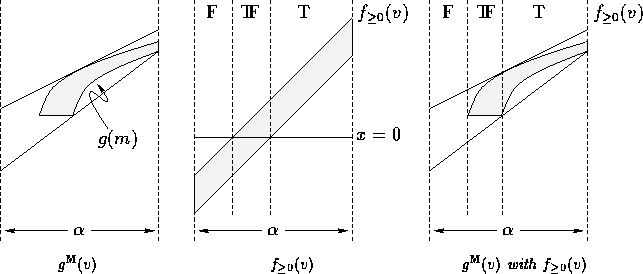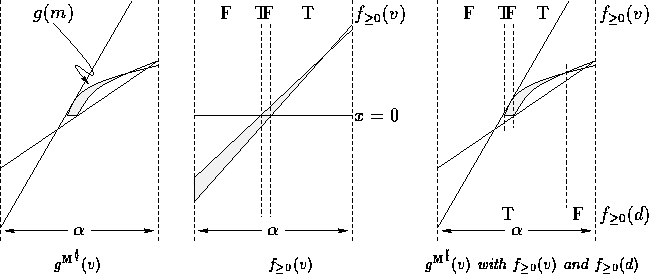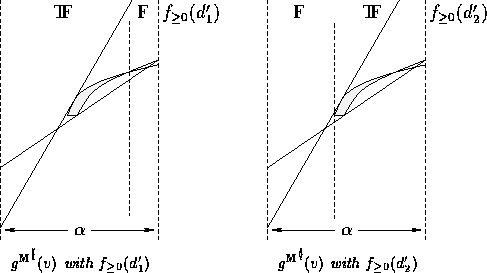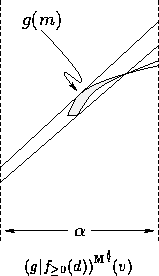




Next: 3.3.18 Discontinuous Functions
Up: 3.3 Linear Interval Arithmetic
Previous: 3.3.16 Partial Functions
We now consider an example partial function, the square root function:
The function g is defined for non-negative extended real numbers:
We let the domain description set include  :
:
This allows a trivial implementation of  :
Which, in turn, allows a trivial implementation of
:
Which, in turn, allows a trivial implementation of
 :
if
:
if  may return a member of
may return a member of  ,
as is the case when implementing
,
as is the case when implementing  models.
If
models.
If  must return a member of
must return a member of  ,
the result may simply be demoted:
,
the result may simply be demoted:
The evaluation of  ;
;
proceeds as follows:
The following figures are presented to aid the reader in
understanding the preceding evaluation.
The evaluation of  ;
;
proceeds as follows:
with
and
Perusal of the following figures may ease the comprehension
of the preceding evaluation.
Since the evaluation is of a  model, the domain constraint must be folded into a single constraint.
An evaluation of a
model, the domain constraint must be folded into a single constraint.
An evaluation of a  model
may finish earlier, with the domain described by
model
may finish earlier, with the domain described by
 rather than
rather than  .
Note that a better bound is possible by taking
.
Note that a better bound is possible by taking  into account when determining v':
With such an approach, the bound appears as follows.
into account when determining v':
With such an approach, the bound appears as follows.





Next: 3.3.18 Discontinuous Functions
Up: 3.3 Linear Interval Arithmetic
Previous: 3.3.16 Partial Functions
![]()
![]()
![]()
![]() :
:
![]()
![]()
![]()
![]()
![]() ;
;
![]()


![]() ;
;
![]()

![]()
![]()


![]()
